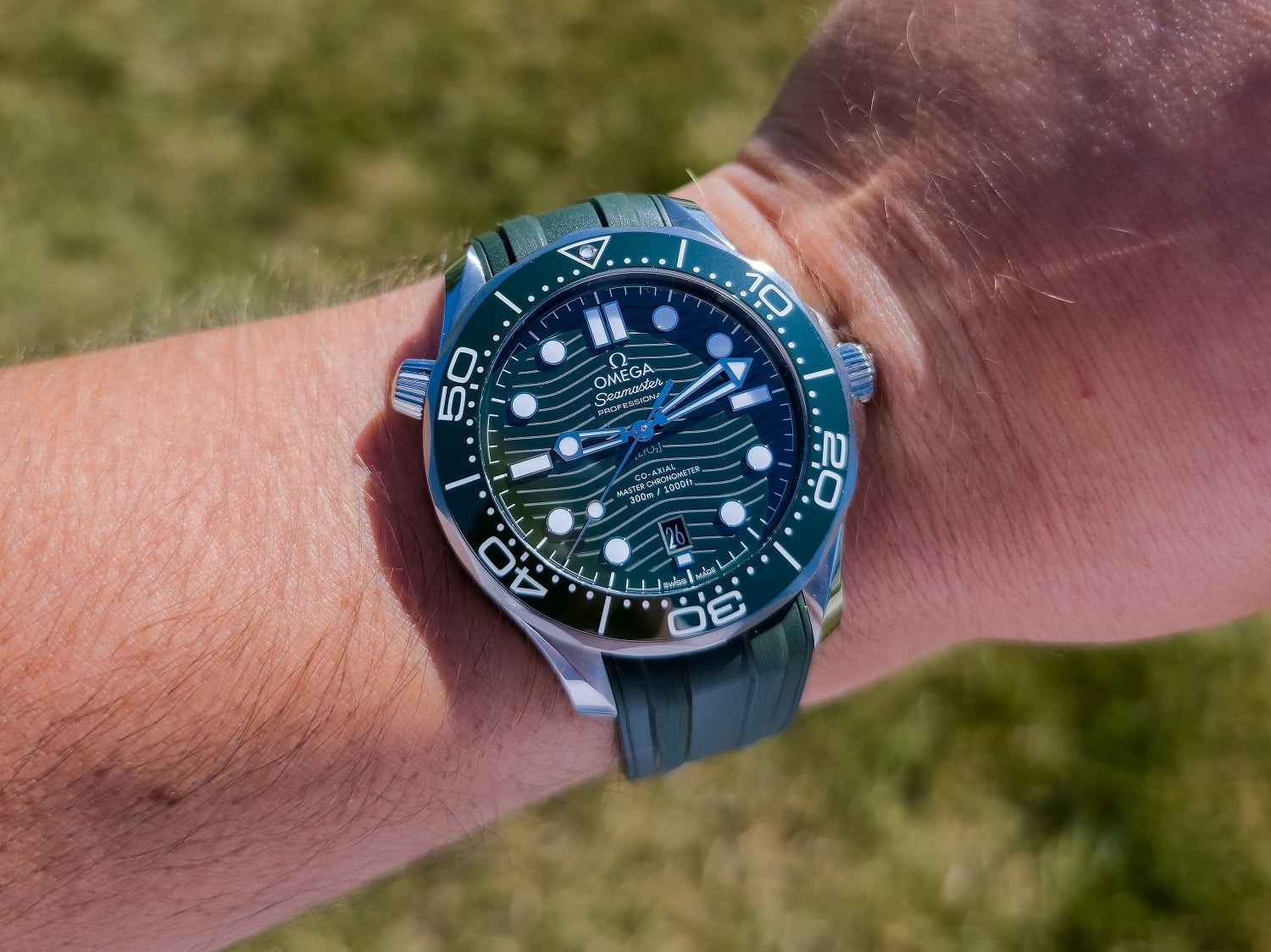Omega Seamaster vs Rolex Submariner is the classic dive watch showdown that never seems to lose steam. Ask any watch enthusiast which one reigns supreme, and you’ll get ten different answers, all equally passionate. These two watches represent more than underwater capability; they’re symbols of how design, heritage, and identity combine on the wrist. The Seamaster feels like the thinking diver’s choice: modern, sharp, and quietly confident. The Submariner? It’s the cultural heavyweight, the blueprint for what most of us picture when we hear “dive watch.” We’ve spent years rotating both on and off the wrist, and the truth is, their appeal runs deeper than brand names or bragging rights.
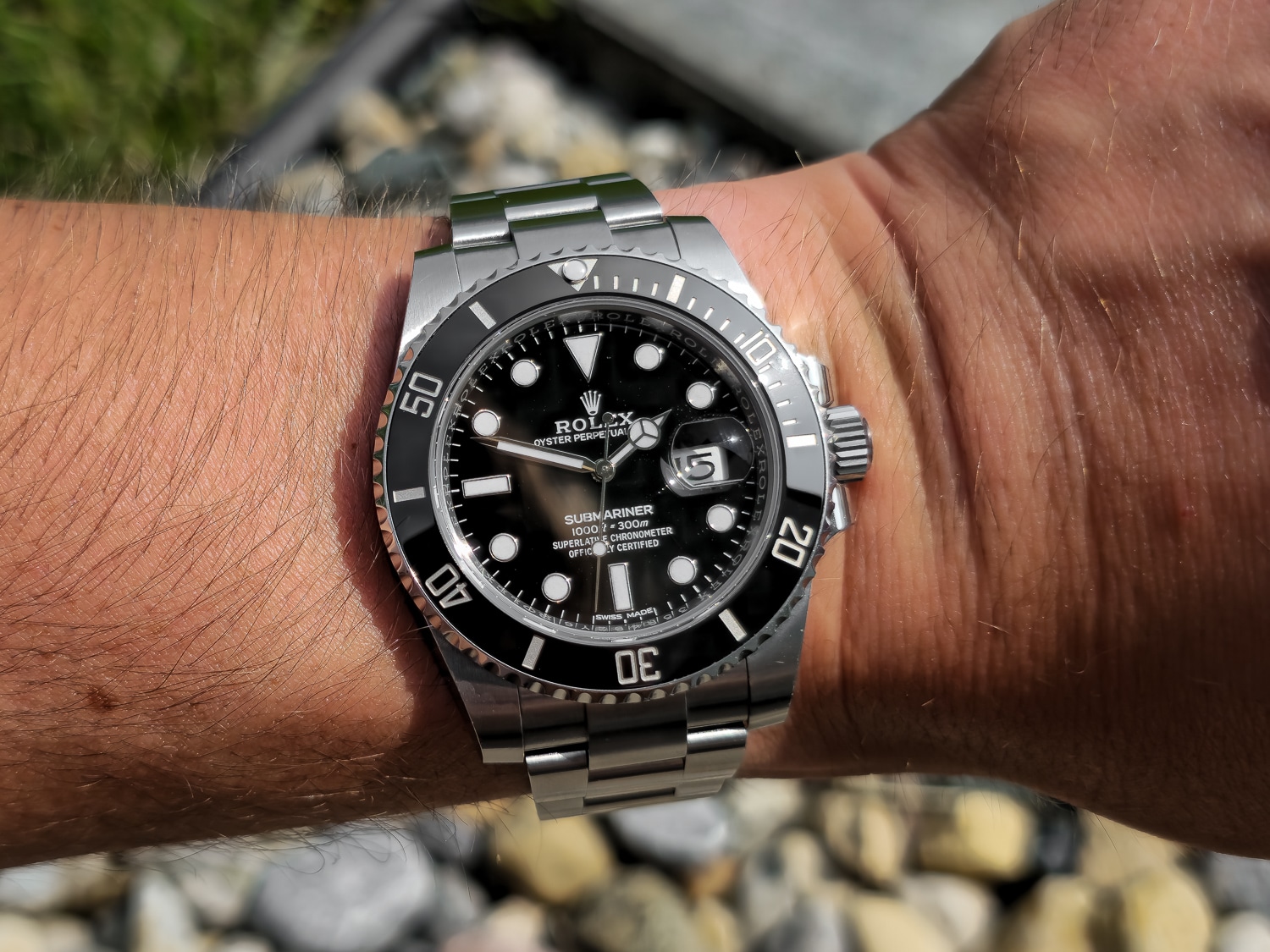
Over the years, we’ve learned that real comparisons come down to wearability, character, and long-term satisfaction. So, in this head-to-head face-off, we’re putting the Omega Seamaster and Rolex Submariner under the same honest light we use for every review: how they wear, how they hold up, and who they’re for. Because at the end of the day, even icons deserve a fair shake when they’re fighting for space on your wrist.
Overview & Identity
In the Omega Seamaster vs Rolex Submariner conversation, you’re looking at two dive watches built on opposite philosophies of what “professional” means.
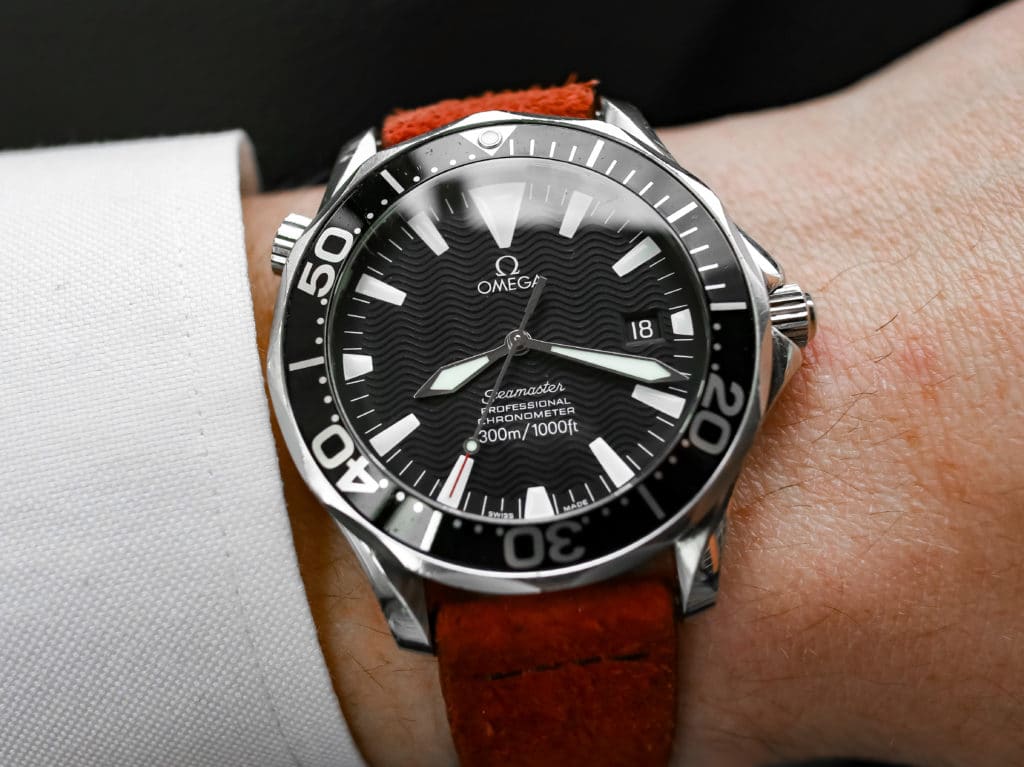
Our time with both the Omega Seamaster 300 and the Seamaster Professional 300M (2254.50.00) showed that Omega leans on precision and texture. The details make the watch come alive once it’s on your wrist. The Seamaster 300 carries a vintage restraint: broad-arrow hands, gilt accents, and a green date disc that feels balanced and mature. Meanwhile, the 300M we reviewed is pure late-’90s Omega attitude: razor-sharp sword hands, a silky bezel with confident clicks, and a case profile that feels slim even at its depth-rated dimensions. In both cases, the Seamaster’s identity is about real-world wear. These are watches that feel ready for the water but not out of place at dinner: a mix that few brands still pull off.
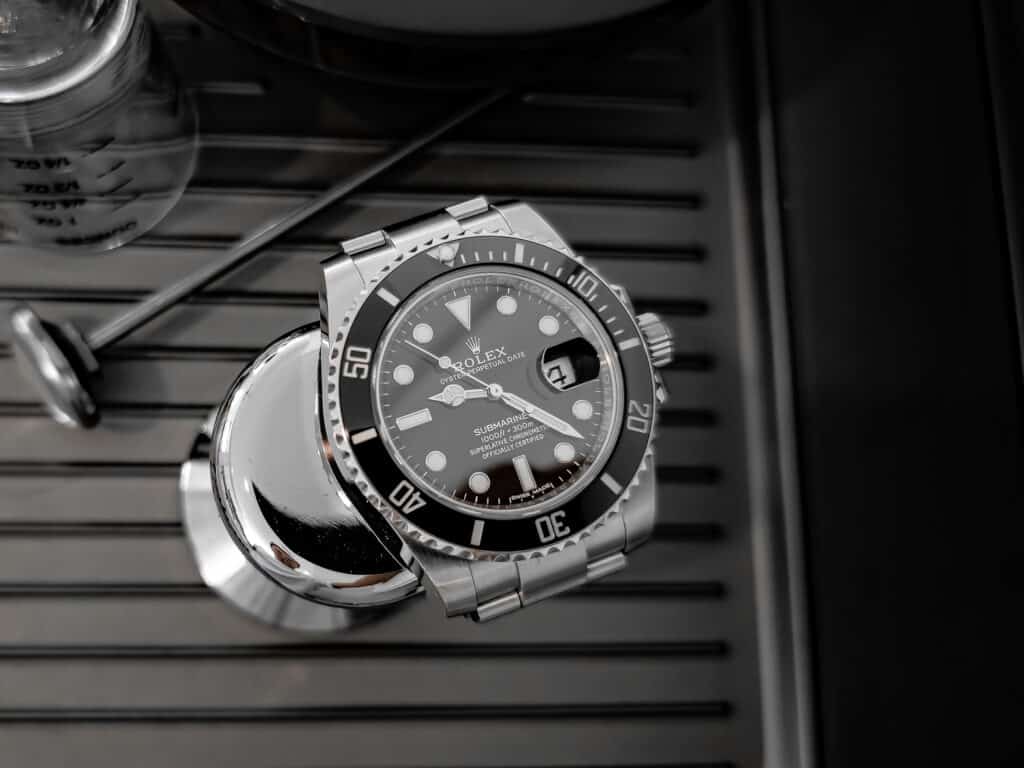
The Rolex Submariner plays the long game of refinement. Every edge, crown turn, and clasp click feels engineered to near-surgical precision. It’s consistent to the point of predictability, but that’s the Sub’s defining trait. The bezel rotation is smooth, the bracelet is tight, and the tolerances feel obsessively checked. Yet, after extended wrist time, that polish can feel distant. It’s the diver that defined the category, but now sits slightly apart from it—more of a luxury artifact than a daily tool.
- The Omega Seamaster leans into individuality. It’s a diver’s watch that balances modern design with daily versatility.
- The Rolex Submariner remains the icon: a tool watch turned status symbol, executed with near-flawless consistency, but often less soul.
Design & Wearability: Bold Precision vs Refined Familiarity

Design-wise, the Omega Seamaster 300M takes the diver playbook and scribbles its own notes in the margins. During our hands-on time with this green-dial Seamaster, the first thing that caught our eye was the dial texture. Those laser-engraved waves capture and reflect light, making the watch feel alive. The skeletonized hands divide opinion (and, at times, legibility), but they’re pure Omega: a design choice that’s confident enough not to chase universal approval. Even the color-matched date wheel feels like a flex born of precision rather than excess. The proportions are balanced, and when paired with the supple factory rubber strap, the watch sits snug and sporty. The bracelet, as we’ve said before, suffers from “Omega weight syndrome,” mistaking heft for quality, but that rubber strap more than redeems it, especially in daily wear.
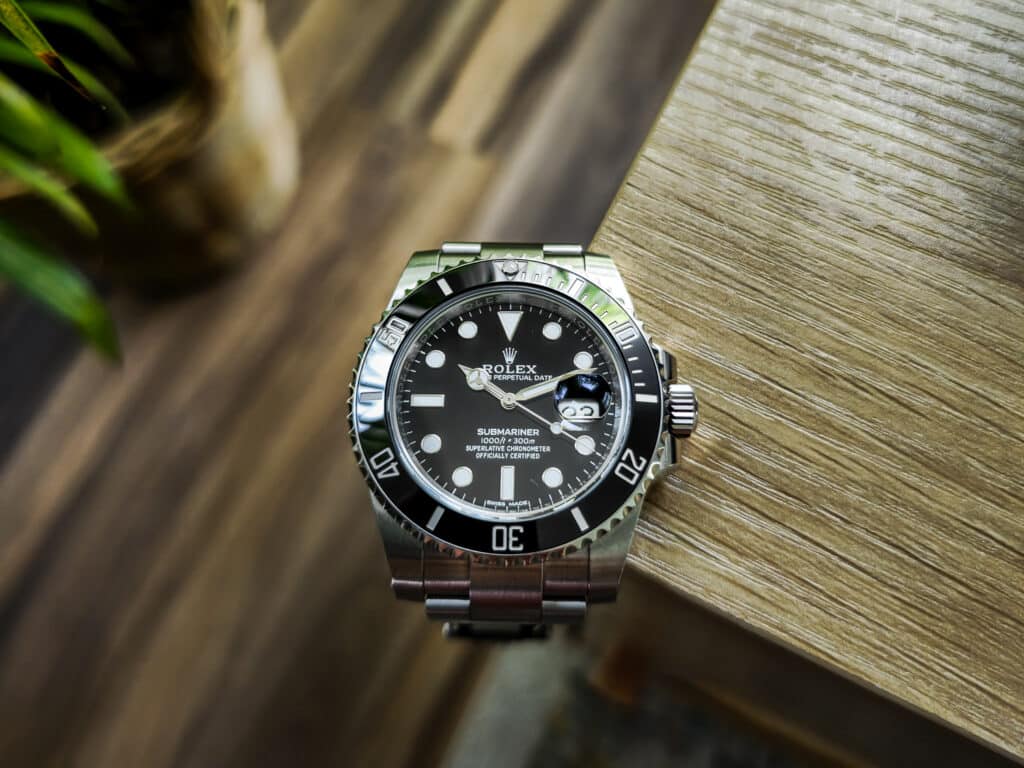
The Rolex Submariner feels almost surgical in its refinement. Its dial may not have the Seamaster’s visual drama, but it’s executed to perfection. The glossy black surface, crisp white text, and luminous hour plots framed in white gold all come together in a layout that feels balanced. The Mercedes hands are iconic for a reason. They deliver instant recognition without needing to shout. But the real star here is the Oyster bracelet. After extended testing, we still can’t find a bracelet that articulates or tapers quite like it. The fit is exact, the clasp operation buttery smooth, and the comfort unmatched. The Sub’s 20 mm-to-16 mm taper gives it that subtle sense of proportion other brands could learn from. It’s the kind of design that wins you over slowly, not instantly.
- The Seamaster 300M delivers an unapologetic presence that balances modern flair with genuine tool-watch roots. It’s expressive, tactile, and built to feel alive on the wrist.
- The Submariner masters refined familiarity: timeless design, perfect ergonomics, and a level of restraint that still defines what a diver should feel like on the wrist.
Build Quality & Technical Approach
Both are luxury divers built to withstand real-world use, yet their construction and engineering philosophies reflect two distinct visions of what top-tier performance should feel like.
Movements:
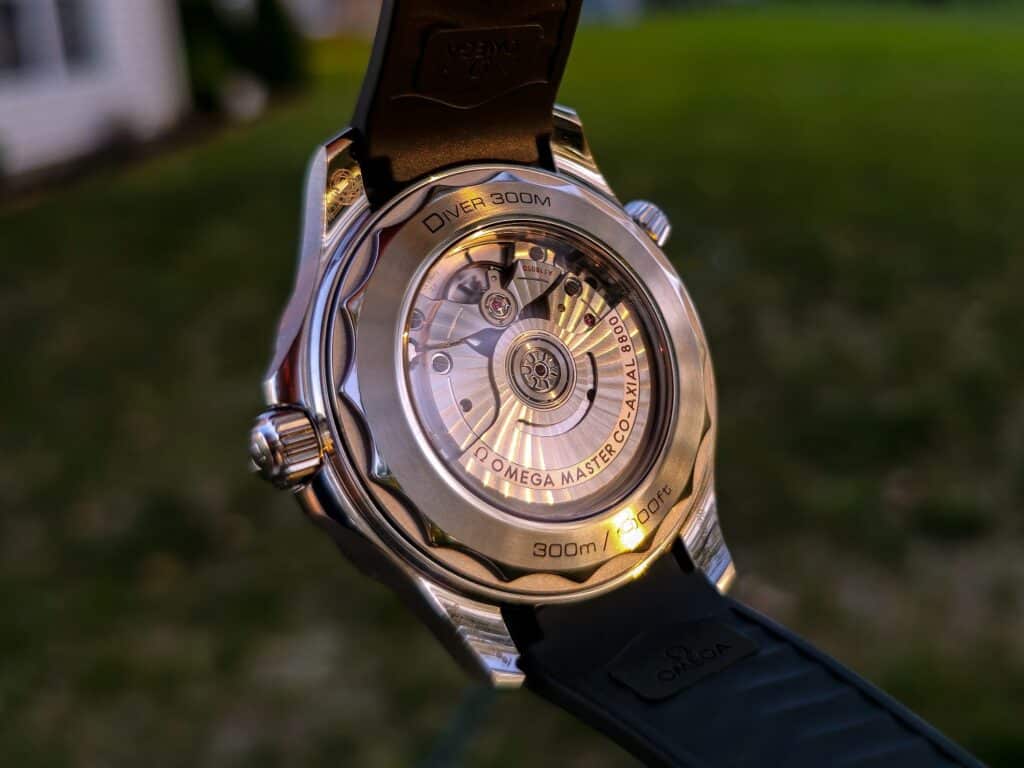
The Omega Seamaster Professional 300M runs the Caliber 1120, a COSC-certified chronometer known for its quiet consistency. During our testing time, it held a steady +4.2 seconds per day, winding smoothly and feeling solid behind the closed caseback. It’s not flashy, but it proves how well Omega’s older calibers were built: reliable, balanced, and still relevant today. The newer Omega Seamaster 300M steps up with the METAS-certified Caliber 8800, anti-magnetic to 15,000 gauss and averaging +1 s/day in testing. Seen through its display back, the finishing is industrial yet thoughtful, blending precision with personality. Its slightly offbeat 25,200 vph beat gives it a distinct pulse.

The Rolex Submariner, powered by the in-house Caliber 3130, takes the opposite route: no open caseback, no visual theatrics, just relentless consistency. Rated at +2/-2 seconds per day, our Sub ran even tighter at +0.5 seconds. The movement’s finishing is purely functional, but the reliability borders on bulletproof. It doesn’t ask for attention, and that’s the point; you wind it, set it, and forget it. The 48-hour power reserve feels modest on paper, but the Submariner’s crown-and-case construction gives it a rugged assurance few watches can match.
Case Construction & Finishing:

The Omega Seamaster 300M impresses most when you get it on your wrist. Despite its 42mm width, it wears closer to 40 thanks to those twisted lyre lugs that visually slim the case. The razor-thin bevel under the bezel gleams just enough without shouting. During testing, the fine brushing on the case flanks and lug interiors stood out as among the best in this price segment. It’s an elegant kind of toughness with artful finishing that still feels ready for real-world use. The bezel, though visually striking with its green ceramic insert, lacks that tactile refinement you expect at this level; crisp and sharp, yes, but a little too clinical in rotation. Still, the overall construction makes this Seamaster one of the most wearable luxury divers we’ve handled, effortlessly balancing wrist comfort and visual punch.
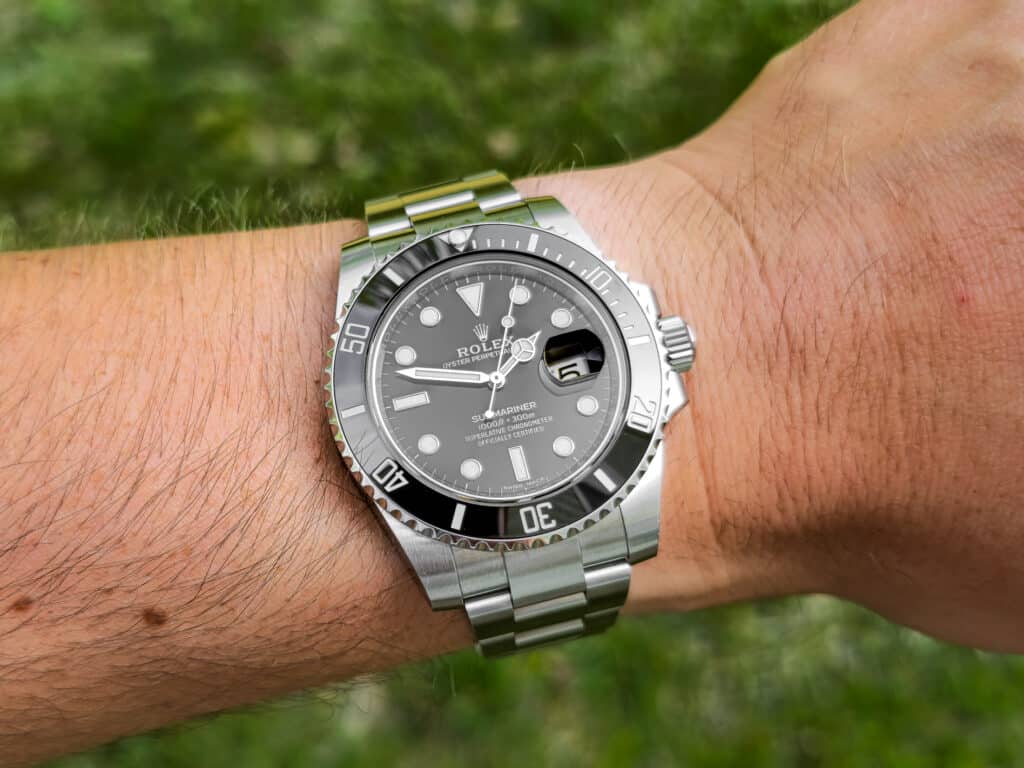
The Rolex Submariner counters with understatement. The 40mm case (or 41mm in newer form) keeps its proportions right: slender at 12.5mm thick with a 48mm lug-to-lug that hugs the wrist. Made from Rolex’s proprietary 904L Oystersteel, it’s built for abuse but finished like a dress watch: brushed tops, polished flanks, and no nonsense anywhere else. The sterile caseback isn’t much to look at, but it’s part of the Sub’s no-frills charm that’s smooth, comfortable, and quietly purposeful. What truly separates it is the bezel. Every click glides with mechanical precision, no play, no hesitation, only that satisfying “Rolex glide” we’ve yet to feel replicated.
Crystals:
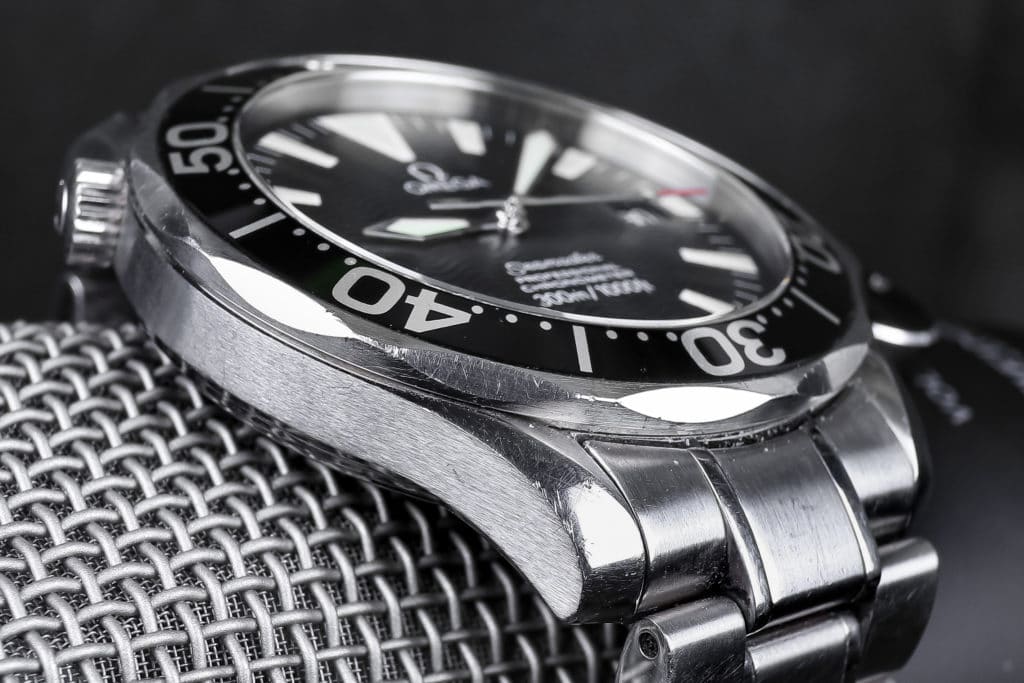
On the Seamaster, the sapphire crystal nearly disappears, and that’s not an exaggeration. During our time with it, we often forgot it was even there until the light hit it right. Omega’s multi-layer AR coating, applied inside and out, cuts glare to almost nothing and gives the dial that “open air” clarity you usually get from top-tier dress watches. The trade-off? Those outer AR layers are prone to picking up faint scratches at certain angles. That’s a small price for how clear and distortion-free the view remains in real-world wear. It’s one of the most transparent crystals we’ve seen on any diver, regardless of price.

The Rolex Submariner’s sapphire crystal takes a more pragmatic route. It’s thick, distortion-free, and built to last decades, but it doesn’t vanish the way Omega’s does. The famous magnifier still feels like a perfect droplet of water suspended on the glass. It’s incredibly functional, even if divisive among enthusiasts. Rolex applies a minimal AR coating (only beneath the crystal in newer models), leaving a faint milky haze under certain lighting. It’s a slight imperfection that’s almost part of the Sub’s DNA now.
Water Resistance and Lume:

The Omega Seamaster Professional 300M (2254.50.00) we reviewed delivers serious dive credentials without feeling over-engineered. Rated to 300m with a screw-down crown and caseback, it’s ready for any water you’ll realistically encounter. However, the helium escape valve at 10 o’clock remains more of an aesthetic flourish than a practical need. What truly stands out is the C3 Super-LumiNova. A few seconds in sunlight and it blazes bright, evenly applied, and long-lasting. As it fades, the lume plots dim from the edges inward, creating that distinctive “burning core” glow that feels alive in low light.
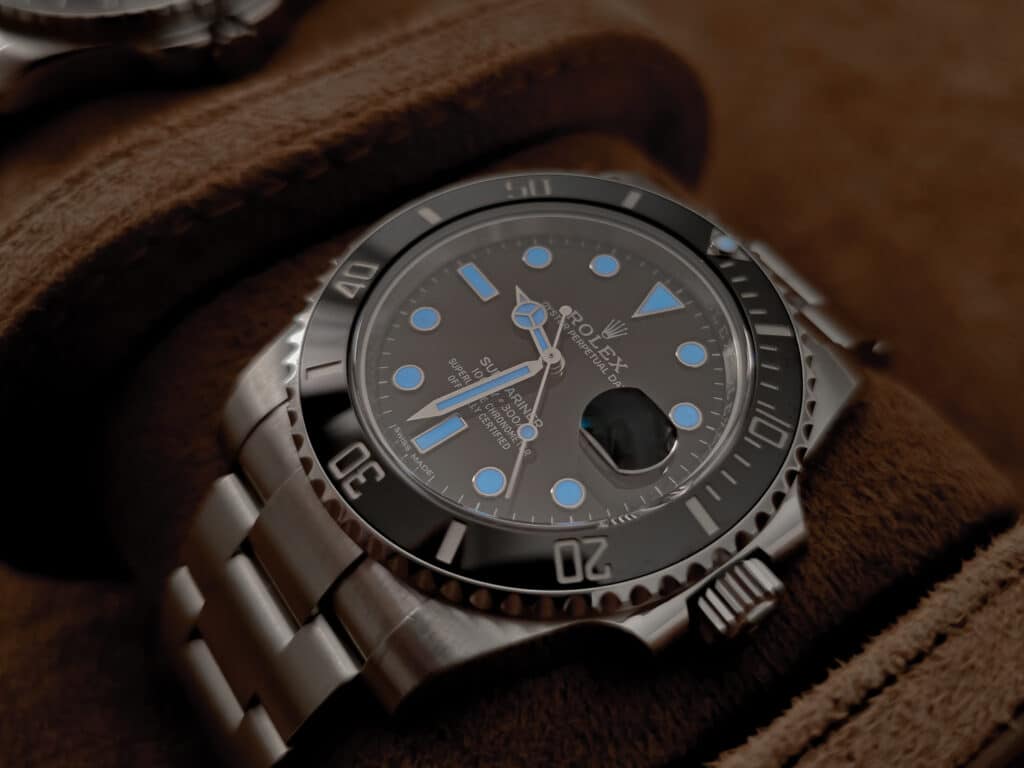
The Rolex Submariner matches the same 300m depth rating but leans on execution over decoration. The Triplock crown system, with its triple gasket setup, gives confidence even if you forget to screw it down properly. It’s practical engineering done the Rolex way: invisible but effective. The blue Chromalight lume isn’t the brightest on the market, but it glows consistently and legibly for hours, with a hue that feels more sophisticated than showy. Even at 3 a.m., it was still perfectly readable, which is proof that Rolex gets the essentials right.
- The Omega Seamaster combines refined engineering with expressive design: METAS/COSC accuracy, elite finishing, near-invisible AR crystal, and vivid C3 lume make it a luxury diver that feels both technical and alive on the wrist.
- The Rolex Submariner prioritizes precision and restraint with flawless case ergonomics, bulletproof movement, smooth bezel action, and reliable Chromalight lume.
Cost Considerations
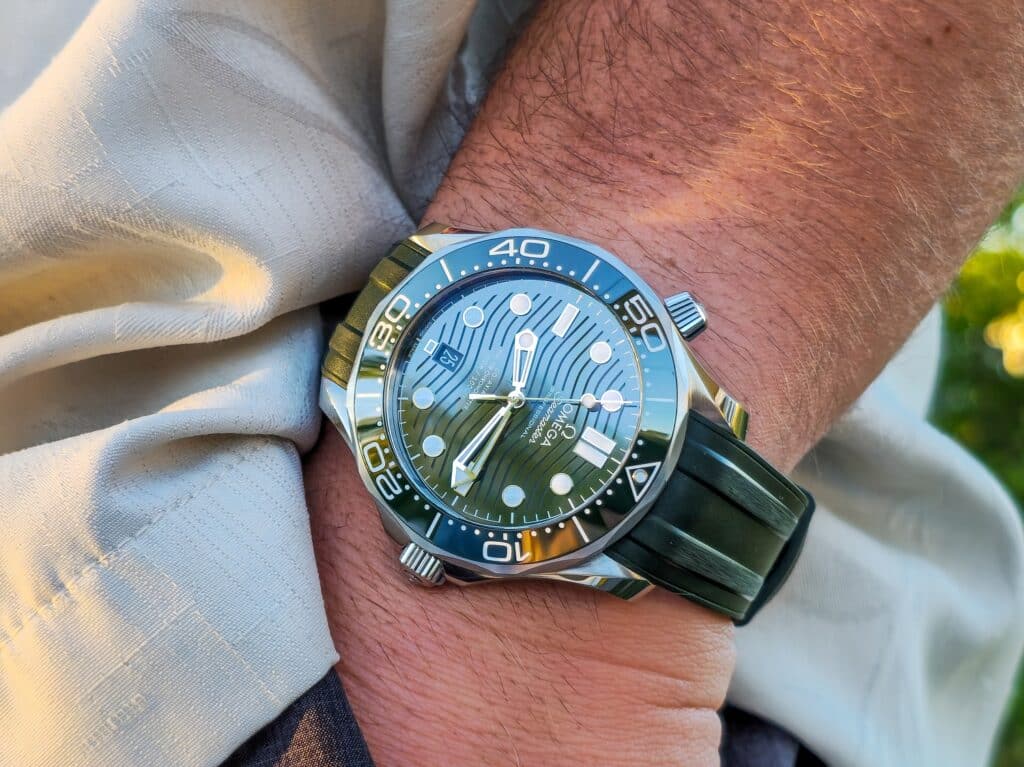
The Omega Seamaster positions itself in that middle ground between accessible luxury and serious horology. At around $5,600 on rubber or $5,900 on a bracelet, it sits noticeably above the likes of Tudor’s Black Bay but comfortably below Rolex territory. We still recommend buying it on the bracelet for long-term flexibility, but either configuration offers substantial value for a luxury diver. It’s not “affordable” by TBWS standards, but it’s one of the few divers in its class that justifies the spend on wrist experience alone.

The Rolex Submariner is a different story. Retail starts around $9,100 and stretches towards $15,000, depending on material and configuration. And that’s before you consider the gray market, where demand pushes prices into “why bother” territory. It’s still a masterpiece of precision and restraint, but in today’s scenario, it feels more like an investment piece than a practical watch. Factor in its widespread presence and the sea of counterfeits that follow it, and the Submariner becomes harder to justify unless you’re chasing the name more than the watch.
Final Thoughts: Who Wins the Dive Watch Crown?

After extensive wrist time with both, one truth stands out, i.e., the Omega Seamaster and Rolex Submariner aren’t fighting the same battle anymore. The Seamaster has evolved into the thinking enthusiast’s diver: technically advanced, visually distinct, and still priced within reach of those who buy watches to wear them, not vault them. Its wave dial and twisted lugs have more personality than most divers twice its price, and its METAS-certified movement proves Omega’s innovation isn’t mere marketing fluff. It’s a modern luxury diver that still feels human.

The Rolex Submariner, by contrast, remains the reference point. It’s the design everyone else has been chasing for half a century. Its strength is refinement through repetition; everything feels deliberate, measured, and executed. But getting one? That’s another story. The retail game, the waitlists, the inflated gray-market prices — they’ve turned what used to be the ultimate tool watch into an exercise in patience and privilege. When you finally get one, you’re buying history and precision, but not necessarily excitement.
The Rolex Submariner may still define the dive watch archetype, but the Omega Seamaster defines what makes the hobby fun again. It’s the watch that feels earned, not granted, and in a market obsessed with flexes, that makes it the winner for us.
We’d love to hear your thoughts on this comparison and our verdict in the comments below.

Co-Founder and Senior Editor
Kaz has been collecting watches since 2015, but he’s been fascinated by product design, the Collector’s psychology, and brand marketing his whole life. While sharing the same strong fondness for all things horologically-affordable as Mike (his TBWS partner in crime), Kaz’s collection niche is also focused on vintage Soviet watches as well as watches that feature a unique, but well-designed quirk or visual hook.
